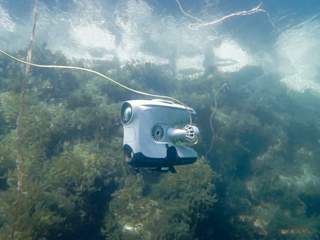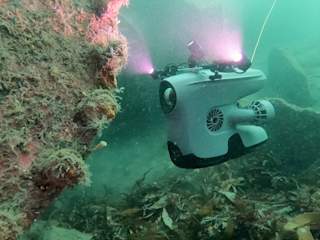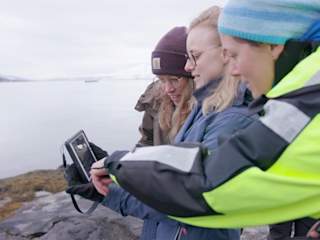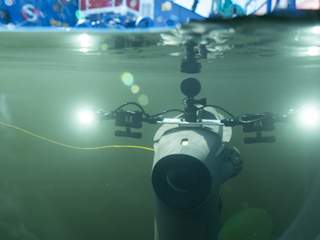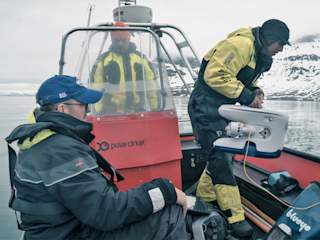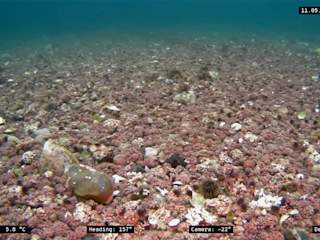At the Department of Arctic and Marine Biology of the Arctic University of Norway, Emily Venables, Engineer with a passion for the underwater world, and her students use Blueye ROVs for their fieldwork to observe the local ecology. The University of Tromsø has recently equipped their students with Blueye ROVs, aiming to integrate it into their marine biology courses and research projects. As a massive university for students researching marine biology, getting a first-eye view of what they are studying underwater is essential. So, Blueye ROVs help them see and understand what they are looking at underwater without becoming a scuba diver.
Enabling students to take their own samples for study
Emily mentions that in the past, study samples collected from a boat by trawling or nets were seen completely out of context. Now, with the latest technology in hand, students can come on a boat or cruise and have a live display of what they are sampling underneath and how those communities interact.

The aim of the university is to integrate the ROVs into courses and research. Emily makes sure that students get the right kind of basic training and tips for using underwater drones. The operations manual is used for the training to ensure students remember things like putting the connection caps after the battery is charged. Emily also points out that the Blueye ROVs are foolproof and simple to use. The training encourages people to use drones and know not to be scared. She uses what is written in our user manual and adds tips from her own experience.

Expanding the research area of intertidal species
The intertidal zone is where the ocean meets the land between high and low tides. In the marine biology course, the students have used the ROVs to extend their studies of the intertidal zone. Every year, there is a field trip to the zone where researchers and students study the species living on the shoreline. Having an ROV enables them to continue their transects of what they see on the beach further underwater. It also allows the students to understand how differently intertidal species behave when they are on the beach and when the tides are in.

The ROVs were super valuable for a student cruise when we worked with the Benthic ecology course postgraduate students from the University of Svalbard. We took the ROVs on that cruise, and they used the video for their analysis. With the help of images from ROVs, they could analyze what species were living in various zones, in different fjords, at different depths. It was very useful for them!
- Emily Joanne Venables, Marine Robotics Engineer, UiT.
One of the most important benefits of having Blueye ROV for UiT
For underwater researchers, Blueye drones are great for quickly getting eyes underwater. Emily says that it is effortless to set up, and you can quickly record video, getting real-time images far faster than if you had to go diving. Blueye provides an instant head-up display of what you are looking at underwater.
The biggest difference between Blueye and other underwater technology I have used is primarily in the app nature. The Blueye app makes things very simple and the connections quite straightforward.
- Emily Joanne Venables, Marine Robotics Engineer, UiT.
In the past, most of the instrumentation used by researchers has been quite heavy and needed different programming languages to communicate to the instruments, usually through a laptop. But now, a phone and an app make the work really easy. Currently, Emily is using the Blueye drone to work on a research project based on a long time-series of photos taken by divers. And they are working on whether, at some point, the ROV technology and the image quality from ROVs can ultimately replace diver footage because they are a lot cheaper than divers!


